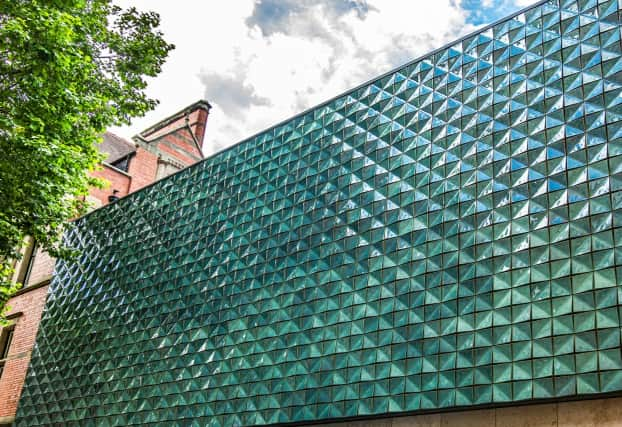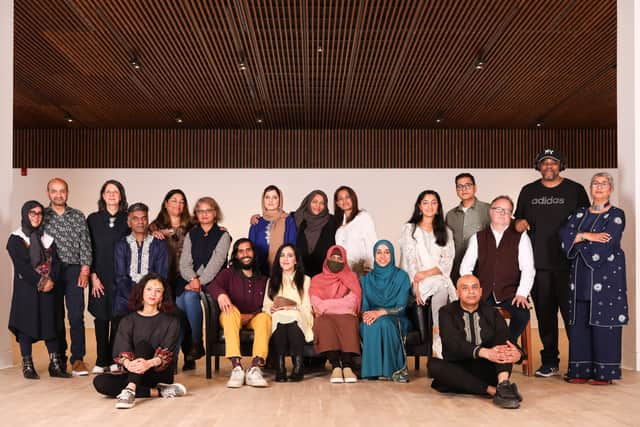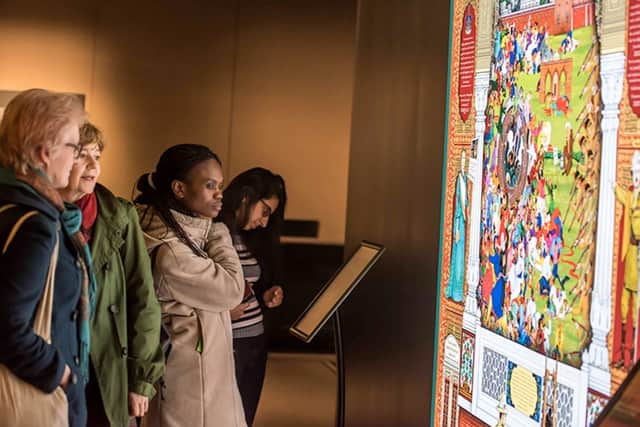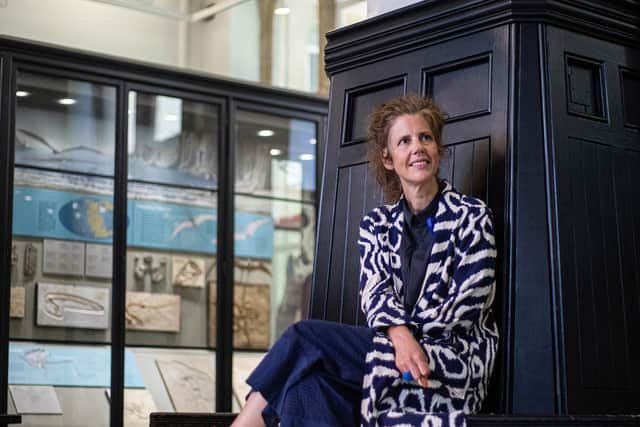Manchester Museum: leading attraction preparing to reopen to public in February 2023 after £15m transformation
and live on Freeview channel 276
Manchester Museum is preparing to reopen to the public after a £15m transformation - and visitors who come through the doors into the new-look facility will find plenty has changed.
The popular attraction will throw the doors open once again to people in February 2023 after a multi-million pound revamp which has included the building of a large new two-storey extension and entirely new galleries.
Advertisement
Hide AdAdvertisement
Hide AdHowever, the museum has also substantially altered the way it approaches its work, saying it wants to forge better understandings between different cultures and to be much more inclusive. The museum is working with the South Asian and Chinese diasporas in Manchester as well as including Indigenous perspectives and says it wants to put the city’s diversity at the heart of its programming.
When is Manchester Museum reopening and what changes has it made?
The museum, which is part of The University of Manchester, will reopen to the public next February after what it has described as its most comprehensive changes in a generation. The £15 million transformation is supported by public funding from Arts Council England, The National Lottery Heritage Fund, the university and philanthropists.
There is a modern two-storey extension to make the museum bigger, which has been designed by architects Purcell. This will open up more exhibition space and there is a new contemporary entrance from Oxford Road. The extension is clad in green-glazed terracotta tiles which are a reference to craftsmanship as well as Victorian and Edwardian period buildings in Manchester. There’s a new cafe and shop, a Changing Places toilet, a prayer room, a quiet room, a picnic area and a therapy room.


The museum is also making major changes to the way it operates, which includes celebrating Manchester’s diversity as well as telling more difficult stories about the city’s relationship with empire and its legacy. The new exhibition hall in the extension, for instance, will open with a display of the museum’s world-class Egypt and Sudan collection including more than 100 objects and eight mummies but will also aim to challenge Victorian narratives of what ancient Egypt was like with the help of new research done at the university.
Advertisement
Hide AdAdvertisement
Hide AdThe extension also contains The South Asia Gallery, a British Museum partnership which is the first permanent gallery in the UK to celebrate the lived experiences and contributions of the South Asian diaspora. Co-curated with the South Asia Gallery Collective, a group including community leaders, educators and artists, the gallery will explore the connection between South Asia and Britain and the legacy of Empire alongside contemporary South Asian culture and creativity.


There are 140 artefacts, including one of the collective’s great-grandfather’s World War I uniform, a rickshaw imported from Bangladesh and decorated by communities in Manchester, a new commissioned mural from British artists The Singh Twins and a Cartier brooch containing a repurposed carved emerald from the Mughal Empire. The gallery also has dedicated spaces for performance, film and community activities.
The Lee Kai Hung Chinese Culture Gallery, meanwhile, will highlight personal stories of migration, friendships and collaboration thanks to a partnership with the university’s Manchester China Institute. It explores historical and contemporary links between Manchester and China and has a range of stunning objects on display including a ‘Manchu’ headdress decorated with blue kingfisher feathers from the late Qing dynasty which lasted between 1636 and 1912, a 20-metre scroll showing the Emperor Kangxi’s birthday procession through the streets of Beijing in the 18th century and a taxidermy milu deer, which was once on the brink of extinction but now thriving in China after decades of international conservation efforts.


Another new attraction will be the Dinosaur Display next to the Fossils Gallery. Visitors can once again meet with one of the museum’s most popular exhibition, the giant tyrannosaurus rex known as Stan, while also seeing April the tenontosaurus. Several years of expert work have gone into allowing April’s skeleton, found in Montana in the USA, to stand on all fours once more. The display also has objects such as a fragmented rock showing the moment the asteroid hit Earth, which can get people thinking about topics such as evolution, climate change and outer space.
Advertisement
Hide AdAdvertisement
Hide AdThe museum has also appointed Alexandra P. Alberda as the first curator of Indigenous perspectives as part of the Indigenising Manchester Museum programme. This is funded by the John Ellerman Foundation and aims to put Indigenous perspectives at the heart of the facility. The new Belonging Gallery – the first of the permanent galleries visitors will see - draws on the museum’s collections and diverse cultural perspectives to reflect on what it means to belong.
The exhibition presents the work of multiple visual storytellers, who bring their own life experience to comic art to rewrite the past and inspire new futures, including Indigenous Futurism and African Futurism, which is explored alongside artefacts and natural history specimens. The works tell stories including the climate migration of the first people to Britain during the last Ice Age, and the poignant story of a Syrian refugee’s life jacket, collected in 2017.
What has been said about the reopening?
Esme Ward, the museum’s director, said: “February 2023 will mark a huge moment in Manchester Museum’s rich history as we open our doors following a major transformation. We have extended the building, making room for more joy and learning and evolving into the museum Manchester needs.


“Beautiful new galleries and exhibitions will showcase the best of the museum’s historic collections, as well as addressing the urgencies of the present day and highlighting the complexities of our world. We have also listened to advocates with lived experience, and inclusive new spaces and features are incorporated throughout. We can’t wait to welcome our visitors back.”
Comment Guidelines
National World encourages reader discussion on our stories. User feedback, insights and back-and-forth exchanges add a rich layer of context to reporting. Please review our Community Guidelines before commenting.
